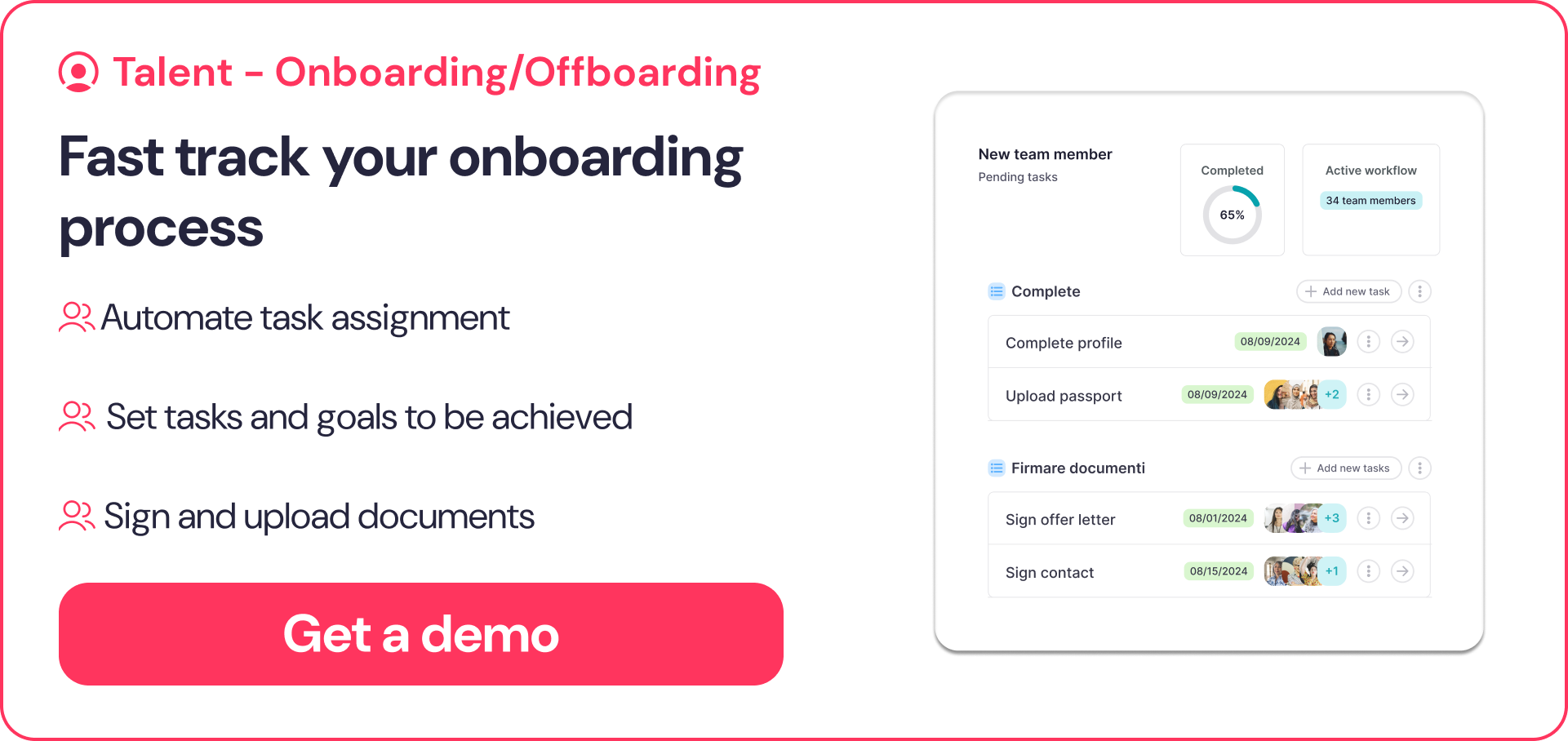The right to work share code was introduced in July 2019, as part of a post-Brexit law. They are now an integral part of the UK immigration system used to verify an employee’s right to work. Employers are legally obliged to conduct right to work checks when hiring. This could be confirming an existing employee’s immigration status or checking an applicant’s right to work share code. This is definitely something you don’t want to mess up.
In this article, we will answer the key question: what is a share code? We will explain how to get one in the UK and when it should be used. The more informed you are about employers’ responsibilities surrounding share codes in the UK, the more prepared you will be when it comes to gathering documents and executing recruitment.
What is a Share Code UK?
A share code is an online nine-digit alpha-numerical code provided by the UK government. Non-UK nationals use it to verify their right to work. Each code is unique and can be shown to employers to demonstrate an individual’s immigration status and employment details.
The share code indicates the type of work the employee can legally perform and the duration of their employment. The UK introduced these codes as part of its immigration system to assist employers in the hiring process post-Brexit.
Since this right-to-work law has been put into place, employers can no longer accept EU, EEA or Swiss passports or ID cards in order to prove applicants’ immigration status.
Going forward, UK employers will have to complete a right-to-work check for their employees from European countries. Therefore, it’s crucial that HR teams and managers are well-informed about this process and how to verify rights to work in the UK.
These codes serve a different purpose than UK visas. A visa is a residence permit granting citizens the right to enter, stay short-term or live permanently in the country.
How is a Right to Work Share Code Used?
The government share code aims to speed up the validation of overseas employees’ employment rights. Specifically, it’s a way to confirm someone’s ‘right to work’ to UK employers.
Using the code and date of birth of the applicant, you will be able to check:
- The types of jobs that the candidate is able to carry out.
- For how long the applicant is legally able to work in the UK.
- Whether they have access to public services like the NHS.
- The applicant’s rights with any UK benefits.
- Whether they are legally able to open a bank account or apply for any credit in the UK.
Keep in mind that the home office share code will only be valid for 30 days to prevent any fraudulent activity. After this, candidates will be required to generate a new, unique code as share codes expire.
Generating a Share Code
These seven steps explain exactly how to get a share code in the UK.
1. The candidate must gather one of the following;
- Biometric residence permit (BRP) number (in many cases this is a visa number)
- Biometric residence card number
- Passport
- National identity card.
2. The candidate must log into their gov.uk account via the Government website with the ID they used for their initial visa application.
3. A 6-digit code will then be sent to their phone or email address.
4. Once they’ve logged in, they will be able to view their immigration status and generate a share code.
5. They must then select why they require the code, i.e. is the share code for employer, landlord or another purpose.
6. Once this has been selected, they will have the ability to “create share code”, and a 9-digit alphanumeric code will appear on their screen.
7. Finally, the individual can give the share code to their employer, along with their date of birth. This proves their right to work and will allow the employer to complete the right-to-work checks. They can then begin the onboarding process.
How to Complete Employer Right to Work Checks
Employers must thoroughly check an employee’s right to work before hiring, as this is their only defense if authorities find the employee working illegally and impose a civil penalty. To avoid any penalties, it’s important that employers know how to do a share code check.
As a starting point, an employer can input the applicants’ share code and D.O.B into the gov UK website in order to view the applicants’ immigration status. This employers right to work checklist outlines the steps you then need to take to complete a right-to-work check:
- Obtain original documents proving their identity, such as a passport.
- Carry out a UK immigration ID check by confirming that each document is genuine and that the candidate is the rightful owner.
- Copy the documents in a way that cannot be tampered with and record the date of the check.
- Know how long your defense will legally last (this depends on the type of document you use to prove their identity).
You can find a full employers right to work checklist on the Government website with more details.
As of April 2022, this can also be checked through Identity Document Validation Technology (IDVT). There will be a list of right-to-work check providers that are established by the government. This allows candidates to upload their personal documents digitally rather than having to show physical documents.
Right to Work Legislation in the UK
Ultimately, managers and HR professionals need to familiarise themselves with this right-to-work process. They’ll need to have a good grasp on the process to check a candidate’s work eligibility in the UK. Not only for the time-saving benefits but also to comply with UK employment laws which state that employers are legally obliged to check and prove the right to work of their employees in the UK. Failure to do a right-to-work check may result in a hefty fine of up to £20,000.
What is Indefinite Leave to Remain?
Indefinite leave to remain (ILR), or a ‘settlement’, is the way in which individuals can settle in the UK with the right to live, work, study and apply for benefits. However, it doesn’t not give someone the ability to vote, hold public office or apply for a British passport. It can be used to apply for British citizenship.
You can apply for this type of settlement if:
- You or a family member are an EU, EEA or Swiss citizen. This is under the EU Settlement Scheme.
- You already have a UK work visa. In this instance, you’ll most likely need to have lived in the UK for at least 5 years. This is reduced to 2-3 years if you possess a tier 1 visa or Innovator or Global Talent visa.
You can used an ILR to apply for a Biometric Residence Permit (BRP). More on this below.
Individuals may have obtained an immigration status document if they received indefinite leave to remain before 2013 and either:
- Are a refugee.
- Don’t yet have a biometric residence permit.
Those with this type of immigration status document do not need a share code. Employers can use this document alongside one other document with a person’s name and NI number on it to check right to work. However, it must have a residence permit sticker on it to be valid.
What is a Biometric Residence Permit (BRP)?
A biometric residence permit (BRP) is a document used to confirm a person’s identity, right to study and right to public services/benefits. It cannot be used to show right to work.
Those with a BRP either:
- Applied to stay in the UK for a period of over 6 months.
- Extended their visa for a period of over 6 months.
- Applied to settle in the UK.
- Transferred their visa to a new passport.
- Applied for certain travel documents from the Home Office.
A BRP card is slightly different to a BRC card (or ‘UK residence card’). A BRP card is titled ‘Residence Permit’ whereas BRCs are either called ‘Residence Card’, ‘Permanent Residence Card’ or ‘Derivative Residence Card’.
If you previously used the UK immigration ID check, you cannot get a BRP.
Head to the Government website to learn more about these.
Right to Work and EU Settlement Scheme
You may be able to apply for the EU Settlement Scheme and remain in the UK if you’re related to an eligible resident of Northern Ireland, or you’re from either:
- The EU
- Switzerland
- Norway
- Iceland
- Liechtenstein.
Centralise Employee Documents and Data with Factorial
Easily and securely manage employer and employee documents with our digital HR software. With Factorial, you can centralise all your company documents in one place, whether that be IDs, contracts, payslips… you name it! Additionally, Factorial can store your team’s valid passports, immigration documents, or any relevant paperwork needed to work in the UK.
Share whichever documents you want with specific employees at the click of a button and even have them sign legal documents digitally with e-signatures. No physical paperwork needed.
Our all-in-one solution enables you to approve or reject employees’ documents in seconds, create different workflow approvals for each type of document and assign other reviewers for each type of document.
This is just the tip of the iceberg. Our all-in-one software offers many other features that allow you to automate all of the repetitive, manual processes that require so much time. For example:
- Time tracking with a clock-in/clock-out tool.
- Set shifts and plan schedules.
- Manage holidays and permits and approve them with a simple click.
- Evaluate employee performance, giving them feedback and setting goals.
- Manage employee training.
- Keep company expenses under control thanks to reports and statistics.
- …and much more!
FAQs about Share Codes
What is the right to work share code in the UK?
The right to work share code is an online nine-digit alpha-numerical code provided by the UK government to enable non-UK nationals to prove their right to work. It shows the kind of work the employee is legally allowed to carry out and the length of time they can work for. The share code is a way to prove ‘right to work’ to UK employers.
How can one generate a share code in the UK?
To generate a share code in the UK, the candidate must gather one of the following: their biometric residence permit number, biometric residence card number, passport, or national identity card. They must log into their gov.uk account with the ID they used for their initial visa application. The system sends a 6-digit code to their phone or email, and once they log in, they can view their immigration status and generate a share code. The candidate can give the share code to their employer, along with their date of birth, to prove their right to work.
What is the process for completing employer right to work checks?
Employers should conduct a thorough right-to-work check before hiring. If an employee is found working illegally for your business, you’ll face a civil penalty. To start, the employer can enter the applicant’s share code and date of birth into the UK government website to verify their immigration status. They should also obtain original identity documents, ensure their authenticity, make secure copies that cannot be tampered with, record the date of the check, and understand how long their legal defense will remain valid.
How is the right to work share code used?
The share code help speeds up the validation of overseas employees’ employment rights. Additionally, it allows them to prove their right to work for UK employers. Using the unique share code and date of birth of the applicant, employers can check the types of jobs that the candidate is able to carry out, how long the applicant is legally able to work in the UK, and whether they have access to public services like the NHS.
What happens if an employer fails to do a right-to-work check?
UK employment laws state that employers are legally obliged to check and prove the right to work of their employees in the UK. Failure to do a right-to-work check may result in a hefty fine of up to £20,000.
Who has a share code?
Those who can view their immigration status online are eligible to receive a share code. Essentially, this means anyone who has a UKVI account (UK visas and immigration), a biometric residence card or permit, or a visa status under the EU Settlement Scheme can obtain a share code.






